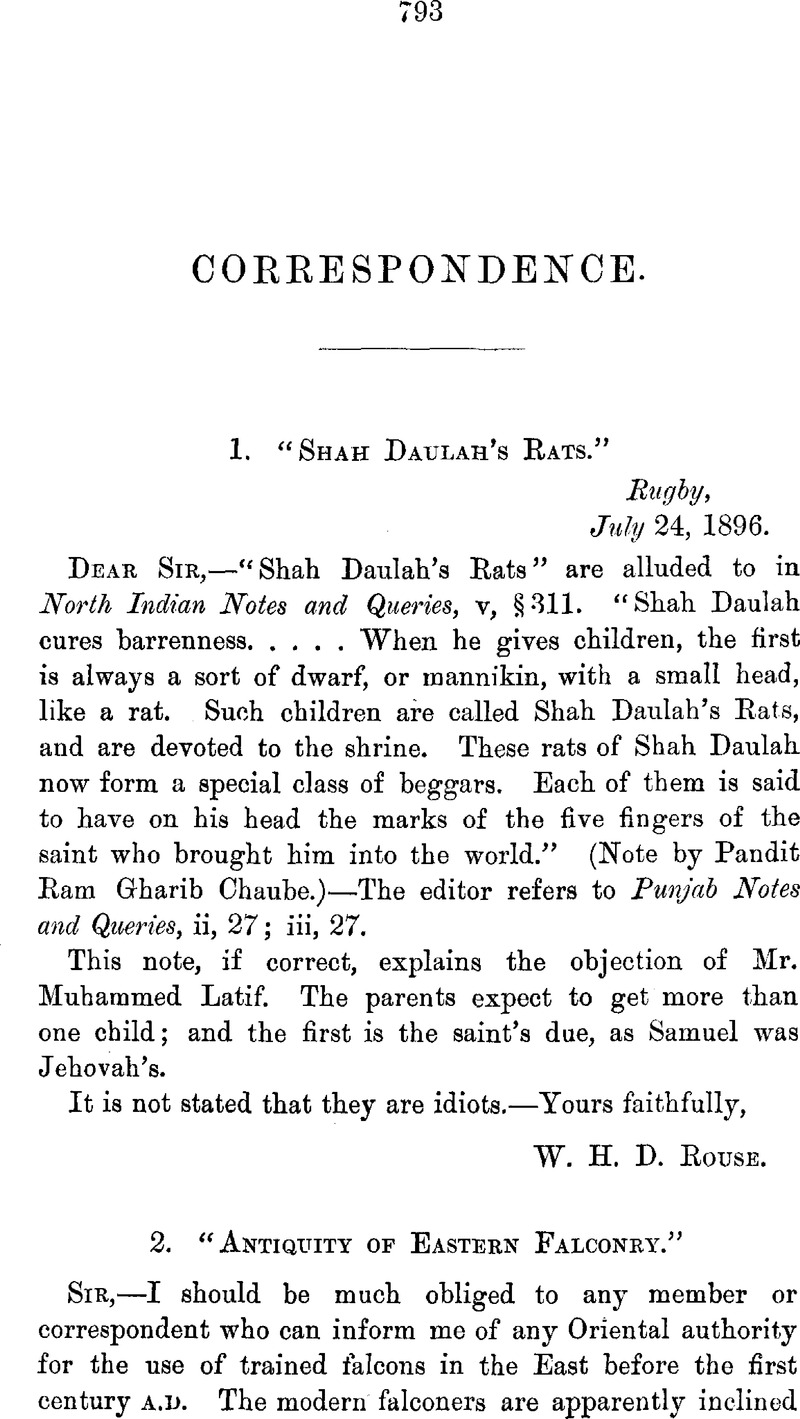Article contents
2. “Antiquity of Eastern Falconry.”
Published online by Cambridge University Press: 15 March 2011
Abstract

- Type
- Correspondence
- Information
- Copyright
- Copyright © The Royal Asiatic Society 1896
References
1 Rodwell translates “wild beasts”; Sale, and my friend, “animals of prey.” My friend adds that chitas are also classed, on the same authority, under the passage quoted, and that the Shah Kama contains many references to falconry. Firdusi, however, is not an admissible witness for days much older than his own, any more than Shakspere for firearms in Hamlet's Denmark and Macbeth's Scotland.
2 Since the above was written, one of our own members has favoured me with some references to mention of Falconry (sijaindmpāta) by Pānini (vi, s. 71), and later Sanskrit authority; and a distinguished Hindu scholar with a quotation from Manu. The true date of the Dharma-shastra has been so much disputed that I do not feel entitled to rely on it in this case. But I suppose one is pretty safe in taking Panini for older authority than Aristotle; if not than “Wen Wang's” historian.
- 1
- Cited by




